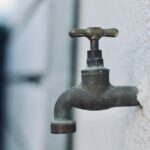The latest government report on Camp Lejeune settlements provides a detailed overview of the progress and status of cases involving various injuries. As of February 27, 2024, the Torts Branch has identified forty-eight cases in litigation that satisfy the Elective Option criteria, as confirmed through documentary evidence.
The distribution of these cases by type of injury is as follows: 13 instances of Bladder Cancer, 12 of Kidney Cancer, 10 of non-Hodgkin’s Lymphoma, 5 of Kidney Disease, 3 of Parkinson’s Disease, 3 of Leukemia, and 2 of Multiple Myeloma. Settlement offers have been made and accepted or rejected by plaintiffs, with several cases already resolved.
Seventeen settlement offers have been accepted by plaintiffs, including cases of Bladder Cancer, Kidney Disease, Kidney Cancer, non-Hodgkin’s Lymphoma, Multiple Myeloma, and Parkinson’s Disease. However, seven offers were rejected, and eight offers have expired, indicating the complexities and challenges in settling these cases.
The Department of Justice (DOJ) has endorsed offers for fifty-eight claimants based on information provided by the Navy. Of these, twenty-four offers have been accepted, two rejected, twenty-five expired, and seven are still pending. Payments have been issued for eight accepted settlement offers from the Navy and seven accepted offers from the DOJ, totaling $3,600,000.
Despite these settlements, challenges remain as the total number of claims reaches 170,000. The Elective Option plan is now considered dead on arrival, and alternative paths to settlement are being explored. Judges are expected to play a crucial role in facilitating the resolution of these cases to avoid overwhelming the courts with a flood of lawsuits.
In conclusion, the Camp Lejeune settlement process continues to evolve, with progress being made in resolving cases and providing compensation to affected individuals. The government and courts are working diligently to address the challenges posed by the large number of claims, ensuring that justice is served for those impacted by the contamination at Camp Lejeune.
















